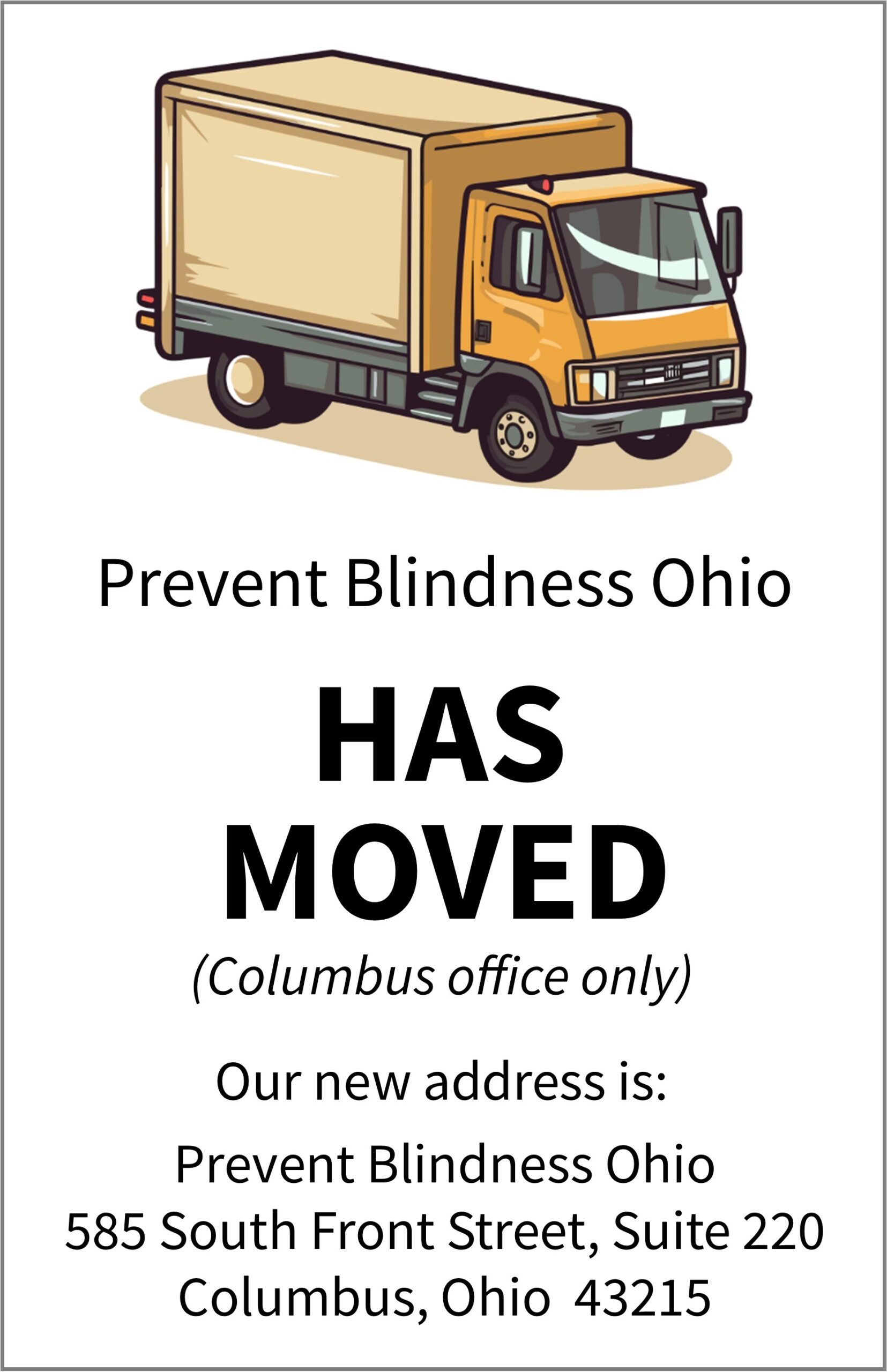
FOR IMMEDIATE RELEASE
For more information:
Prevent Blindness, Ohio Affiliate
Dori Jennings
(614)270-0746
[email protected]
Prevent Blindness Declares March as Workplace Eye Wellness Month to Provide Sight-Saving Resources to Employees, Employers
– Prevent Blindness offers fact sheets, shareable social media graphics and online resources on ways to keep eyes healthy in the workplace –
Columbus, OH (March 15, 2022) – March is Workplace Eye Wellness Month at the Ohio Affiliate of Prevent Blindness. The nonprofit group provides free resources, including an overview of proper eye protection and safety glasses for various industries, and information on the effects of extended digital screen use.
According to a recent report from the U.S. Bureau of Labor Statistics, there were 15,730 eye injuries involving days away from work in 2020. Proper eye protection minimizes the risk of significant eye injury. Prevent Blindness recommends that the type of eye protection that should be used depends on the hazards in the workplace. For example, someone working in an area that has particles, flying objects, or dust, should wear safety glasses with side protection (side shields). If working near hazardous radiation (welding, lasers, or fiber optics) special-purpose safety glasses, goggles, face shields, or helmets designed for that task should be worn.
The Occupational Safety and Health Administration (OSHA) requires employers to ensure the safety of all employees in the work environment. Eye and face protection must be provided whenever necessary to protect against chemical, environmental, radiological or mechanical irritants and hazards. OSHA also requires that employers provide personal protective equipment (PPE) to their workers, and ensure its proper use. Additionally, employers are also required to train each worker required to use PPE.
The Centers for Disease Control and Prevention (CDC) recommends eye protection for a variety of potential exposure settings where workers may be at risk of acquiring infectious diseases via ocular exposure. According to the CDC, infectious diseases can be transmitted through various mechanisms, among which are infections that can be introduced through the mucous membranes of the eye (conjunctiva). These include viruses and bacteria than can cause conjunctivitis, and viruses that can cause systemic infections, including bloodborne viruses, herpes viruses, and rhinoviruses.
For those in an office setting, the average American worker spends seven hours a day on the computer either in the office or working from home, according to the American Optometric Association. Employees who work primarily using digital screens, such as computer monitors, tablets and smart phones, are at increased risk of digital eye strain. Symptoms of eye strain include sore or irritated eyes, blurred vision and headaches.
Prevent Blindness recommends the following:
- Screen time: Try to decrease the amount of time spent in front of these screens and/or take frequent breaks to give your eyes a rest.
- Filters: Screen filters are available for smart phones, tablets, and computer screens. They decrease the amount of blue light given off from these devices that could reach the retina in the eyes.
- Anti-reflective lenses: Anti-reflective lenses reduce glare and increase contrast and also block blue light from the sun and digital devices.
- Intraocular lens (IOL):After cataract surgery, the cloudy lens will be replaced with an intraocular lens (IOL). The lens naturally protects the eye from almost all ultraviolet light and some blue light. There are types of IOL that can protect the eye and retina from blue light.
“Practicing eye healthy habits in the workplace today, like wearing proper eye protection, and decreasing the amount of screen time whenever possible, can help save our sight now and for years to come,” said Amy Pulles, President & CEO of the Ohio Affiliate of Prevent Blindness.
For more information about workplace eye health topics, including the effects of prolonged digital screen use, and eye injuries, please contact Prevent Blindness, Ohio Affiliate at 800-301-2020 or pbohio.org.
About Prevent Blindness, Ohio Affiliate
Founded in 1908, Prevent Blindness is the nation’s leading volunteer eye health and safety organization dedicated to fighting blindness and saving sight. The Ohio Affiliate of Prevent Blindness serves all 88 Ohio counties, providing direct services to more than 1,000,000 Ohioans annually and educating millions of consumers about what they can do to protect and preserve their precious gift of sight. For more information or to contribute, call 800-301-2020. Visit us on the web at pbohio.org, Facebook at facebook.com/pbohio/, or Twitter at twitter.com/PB_Ohio
###

